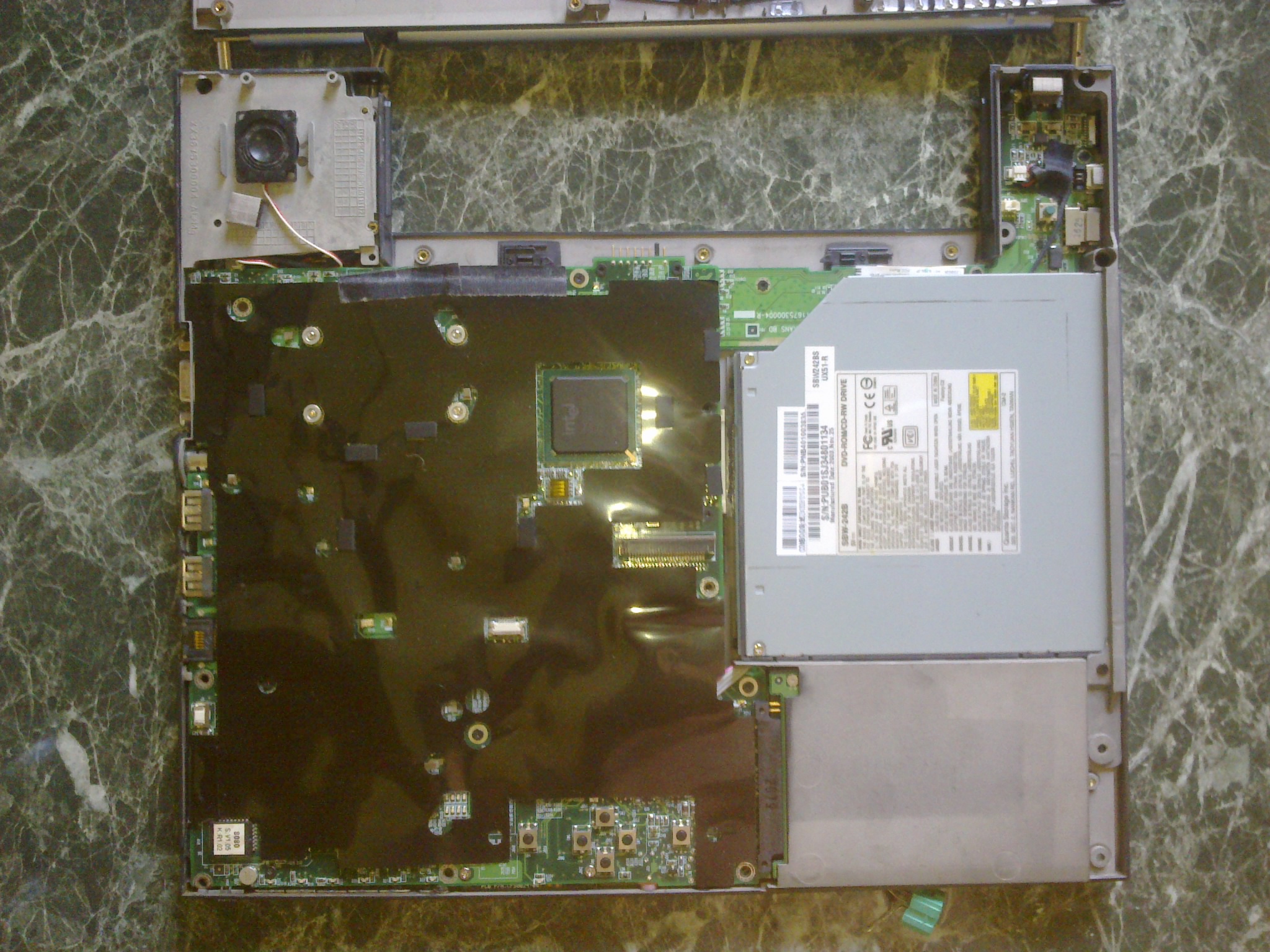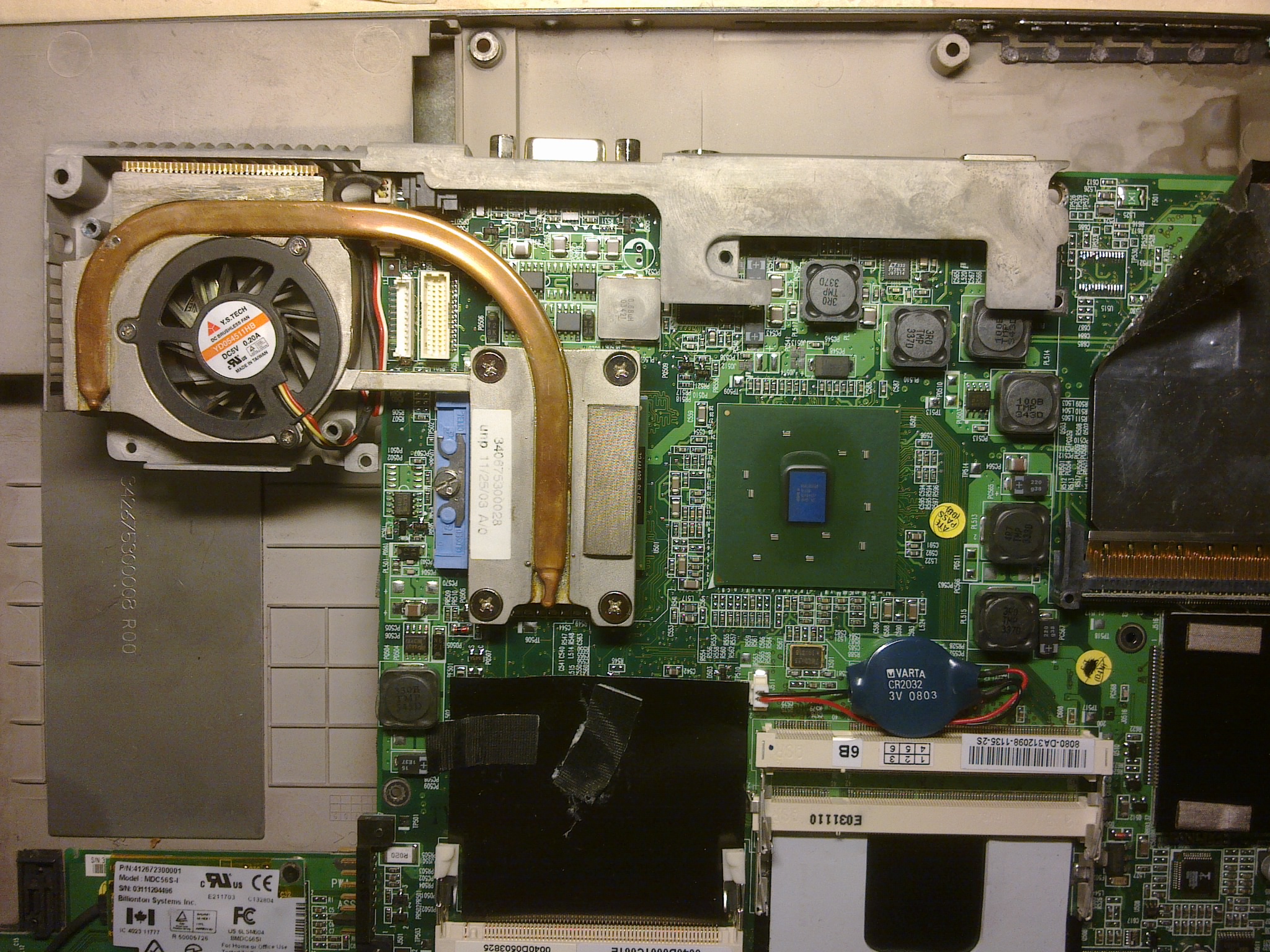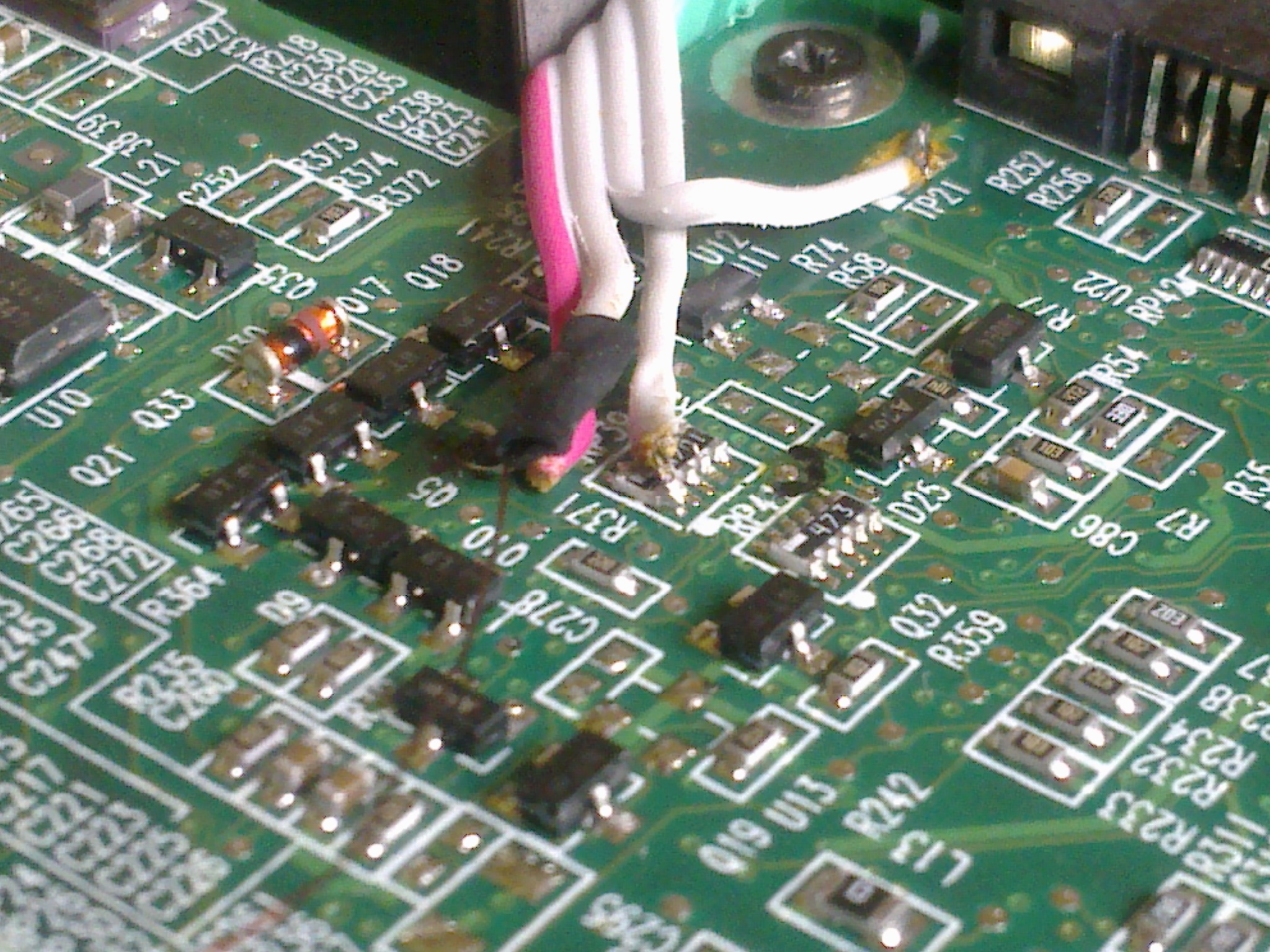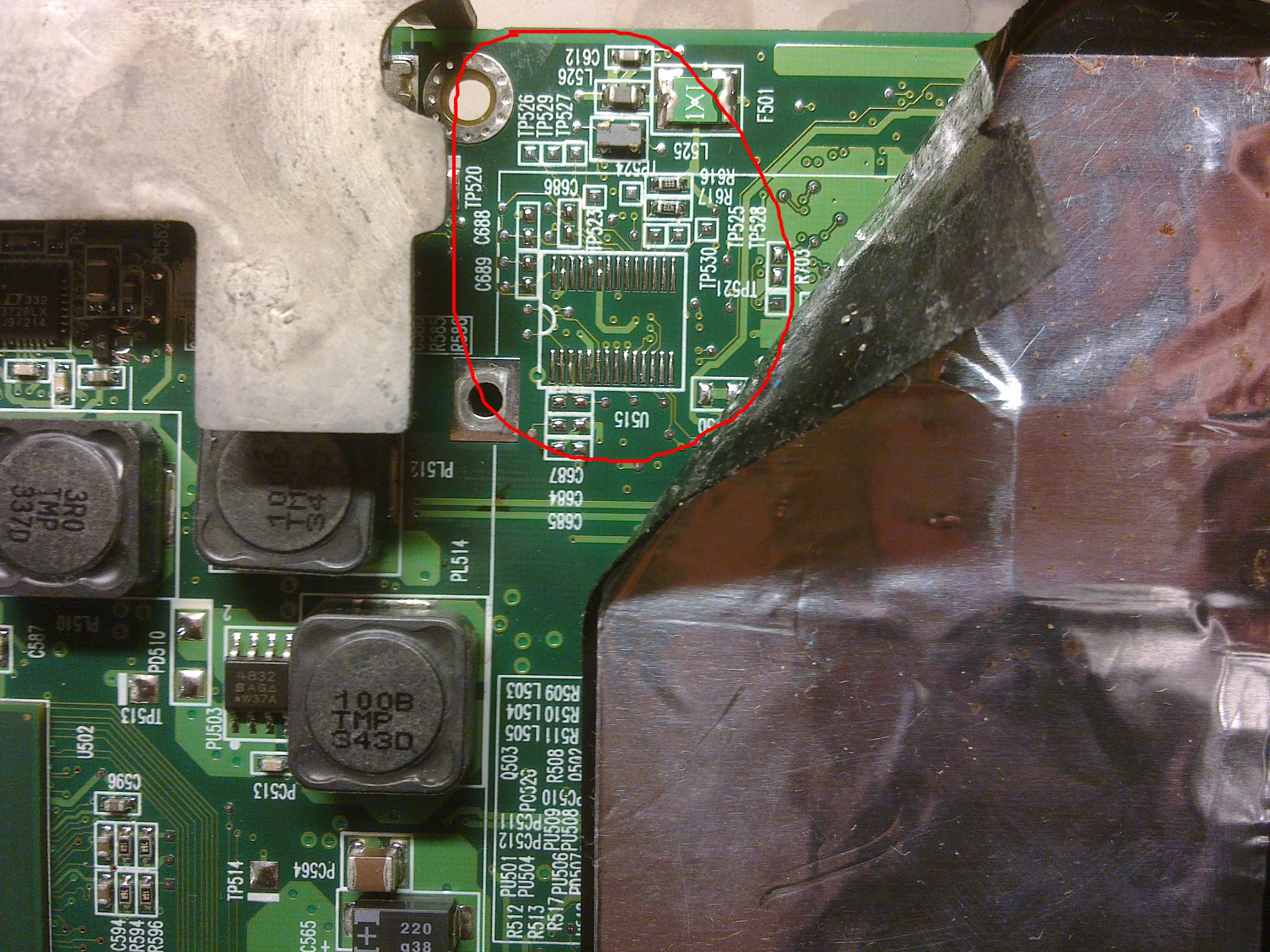When throwing trash the main thing - do not start to consider it. Part 1?
Some time ago, my friends were rumbling tied to the tails with empty cans from under the snack, my friends passed by the garbage can and saw a bag of suspiciously neat appearance standing next to it. Looking inside, they decided to give a look at it and me too. Inside the bag was almost completely complete laptop iRU Stilo-3014COMBO.
To whom it is also interesting to look under the hood and try in a modern environment - I ask under the cat.

A brief external examination and subsequent search showed that nee it was the MiTAC 8080 laptop and provided a service manual (look at elektrotanya or write in a personal).
')
To begin with - the installation data:
The filling, as I understand it, is typical enough for its time. For example, the computer that I used until 2012 under 98 and XP was weaker on the processor (P III) and had three times more SDRAM memory. I can not say that he was much dumber than the current i3 with 3GB DDR3 at work.
Of the features - an almost square design, the Fn key at the Ctrl site, power indicators dubbed on both surfaces of the monitor, and a keypad on the front face for playing Audio CD without the notebook itself being turned on.
And the appearance (all photos were taken already before writing the article). Above:

Bottom, with the covers removed compartments. Air intake into the fan is from the inside of the case through the stamping in the compartment lid, the discharge is sideways and backward. So, you can probably not be particularly afraid to put the laptop on soft bedding:

Partially disintegrated:

Attempts to turn on are not particularly pleased - once from 5..10 managed to get to the BIOS. Therefore, the laptop was disassembled and inspected. Bottom half body with a filling, upper half body with a keyboard and touchpad. On semi-bodies and lower covers - conductive spraying, and on the board - spring-loaded contacts on the cover:


Main board top and bottom, additional charge:



In addition to the “fatigue” of soldering the power connector (there was one message in the network that caused the board to burn out as a result) and small traces of spilling liquid under the keyboard, in the corner of the board near the BIOS memory (without corrosion) and on the bottom half-case - no crime was noted:


Along the way, an “integrated” POST card was found on 8 LEDs connected to the Super I / O parallel port:


After reviewing the reset signal circuit (all faults passed) and power supply (in the absence of a start, there was no power supply from the processor core to the MA501907 PU505), I decided to try to delay the start of this stabilizer. A solder capacitor with a capacitance of 0.1 μF to the PR61 resistor circuit (PGOOD readiness output of the previous stabilizer and the SYSPOK resolution input) significantly increased the frequency of successful launches. With a 1 microfarad capacitor - the launch has become steady. It is not excluded that the instability was caused by the absence of a “distort” of one of the three key transistors in each arm of this stabilizer:


Now it is the turn to study the BIOS, but it has not flashed a special wealth of settings or service information. At the BIOS level, netbooks of five or eight years old.
Possible download sources are HDD, CD / DVD, LAN, USB-FDD. Since, as I read, the reworking of USB-Flash to USB-FDD requires additional gestures, and the simplest utility from HP did not give the expected effect, I installed the drive from a portable HDD with some live systems. Since Windows PE was not there - I limited myself to Free DOS with CheckIt and antiX-17_386-full, as the most undemanding modern distribution kit I know of.
CheckIt successfully tested everything I thought of then. With the exception of the keyboard, a few keys did not work and a few generated phantom key presses.
Following the touchpad signals (it has a PS / 2 interface), it reached the assembly of the RP36 resistors, which “tightened” the PS / 2 lines. But the attempt to use the neighboring lines KM_DATA and KM_CLK to connect an external keyboard was not successful. Perhaps - it was stored in reserve and not activated in the current firmware of the service microcontroller H8 / F3437. Switching the external keyboard to the touchpad lines led to their conflict (although at work, barcode scanners with keyboards quite well work in parallel). If you do not involve an external USB keyboard - there are options "touchpad + buggy built-in keyboard" or "external keyboard".

Also, in the process of viewing the circuit and examining the board, there was a driver not identified with a U515 reference designator (under the PCMCIA slot frame) and RS-232 signals brought to test points.

You can, of course, delve into / sys / class to search for and test suitable keyboards or PS / 2 and ttyS. But for this you need a more substantive interest and immersion in the question.
After that, I switched to antiX. The download is quite vigorous (remember - the live system with HDD) - the kernel of seconds in 5 loads, the whole system takes about half a minute. Text editors, image viewers, online music, movies (with HDD, DVD and IPTV) - go to the very best.
The only disappointment is FireFox. On 256 MB of RAM, he unsuccessfully swapped for five to seven minutes and I decided to free him from the agony. Linx text browser wound up a fly, but it needs a habit. Above the page of the advanced search, I spent about three minutes before I achieved the result.
Here are screenshots of movies on the built-in Gnome MPV with a system load indicator. DVD (0% CPU !?):

HDD (38% CPU):

IPTV (federal channel from local provider, 57% of CPU):

By today's standards, such a laptop could well be a typewriter (especially with a “high” screen) or a media player “it’s not a pity if anything” at the dacha.
If you need more pictures or video - write in the comments.
PS If anyone is interested in buying for a collection or donation - write in a personal.
To whom it is also interesting to look under the hood and try in a modern environment - I ask under the cat.

A brief external examination and subsequent search showed that nee it was the MiTAC 8080 laptop and provided a service manual (look at elektrotanya or write in a personal).
')
To begin with - the installation data:
- CPU: Intel Pentium M (Banias) processor in Micro-FCPGA package. In this case, 1.4 GHz.
- Frequency Synthesizer: ICS950810.
- North: Montara-GM (2 DDR memory slots, 256 MB installed at 266 MHz, integrated video).
- South: ICH4-M (PCI, IDE, LPC, USB).
- TV signal conditioner to S-Video connector: CH7011A.
- Super I / O controller: PC87393 (ISA bus, serial / IR and parallel ports).
- Additional microcontroller on the ISA bus: Hitachi H8 / F3437 for servicing the keyboard, PS / 2 ports, ADM1021A temperature sensor and fan.
- LAN 10/100: VT6105.
- FAX / MODEM: Billonton MDC56S-I 56Kbps Fax Modem.
- PCMCIA and card reader controller: CB710.
- IEEE1394 (FireWire) controller: VT6307L.
- AC'97 code: STAC9750.
- 1 miniPCI connector with preparation for installing a wireless module.
- HDD: From 20 to 40 GB, along with both sets of fasteners was absent.
- DVD / CD-RW drive.
- Display: 14.1 "TFT 1024x768, matte. QD141X1LH03-MP01 or N141X6-L0
- Battery: Li-Ion, 14.8 V nom. (4S), 4400 mAh (2P?), Dead.
- BIOS: 4Mb, Insyde software.
- Preinstalled Windows XP Home (should have been on the missing HDD).
The filling, as I understand it, is typical enough for its time. For example, the computer that I used until 2012 under 98 and XP was weaker on the processor (P III) and had three times more SDRAM memory. I can not say that he was much dumber than the current i3 with 3GB DDR3 at work.
Of the features - an almost square design, the Fn key at the Ctrl site, power indicators dubbed on both surfaces of the monitor, and a keypad on the front face for playing Audio CD without the notebook itself being turned on.
And the appearance (all photos were taken already before writing the article). Above:

Bottom, with the covers removed compartments. Air intake into the fan is from the inside of the case through the stamping in the compartment lid, the discharge is sideways and backward. So, you can probably not be particularly afraid to put the laptop on soft bedding:

Partially disintegrated:

Attempts to turn on are not particularly pleased - once from 5..10 managed to get to the BIOS. Therefore, the laptop was disassembled and inspected. Bottom half body with a filling, upper half body with a keyboard and touchpad. On semi-bodies and lower covers - conductive spraying, and on the board - spring-loaded contacts on the cover:


Main board top and bottom, additional charge:



In addition to the “fatigue” of soldering the power connector (there was one message in the network that caused the board to burn out as a result) and small traces of spilling liquid under the keyboard, in the corner of the board near the BIOS memory (without corrosion) and on the bottom half-case - no crime was noted:


Along the way, an “integrated” POST card was found on 8 LEDs connected to the Super I / O parallel port:


After reviewing the reset signal circuit (all faults passed) and power supply (in the absence of a start, there was no power supply from the processor core to the MA501907 PU505), I decided to try to delay the start of this stabilizer. A solder capacitor with a capacitance of 0.1 μF to the PR61 resistor circuit (PGOOD readiness output of the previous stabilizer and the SYSPOK resolution input) significantly increased the frequency of successful launches. With a 1 microfarad capacitor - the launch has become steady. It is not excluded that the instability was caused by the absence of a “distort” of one of the three key transistors in each arm of this stabilizer:


Now it is the turn to study the BIOS, but it has not flashed a special wealth of settings or service information. At the BIOS level, netbooks of five or eight years old.
Possible download sources are HDD, CD / DVD, LAN, USB-FDD. Since, as I read, the reworking of USB-Flash to USB-FDD requires additional gestures, and the simplest utility from HP did not give the expected effect, I installed the drive from a portable HDD with some live systems. Since Windows PE was not there - I limited myself to Free DOS with CheckIt and antiX-17_386-full, as the most undemanding modern distribution kit I know of.
CheckIt successfully tested everything I thought of then. With the exception of the keyboard, a few keys did not work and a few generated phantom key presses.
Following the touchpad signals (it has a PS / 2 interface), it reached the assembly of the RP36 resistors, which “tightened” the PS / 2 lines. But the attempt to use the neighboring lines KM_DATA and KM_CLK to connect an external keyboard was not successful. Perhaps - it was stored in reserve and not activated in the current firmware of the service microcontroller H8 / F3437. Switching the external keyboard to the touchpad lines led to their conflict (although at work, barcode scanners with keyboards quite well work in parallel). If you do not involve an external USB keyboard - there are options "touchpad + buggy built-in keyboard" or "external keyboard".

Also, in the process of viewing the circuit and examining the board, there was a driver not identified with a U515 reference designator (under the PCMCIA slot frame) and RS-232 signals brought to test points.

You can, of course, delve into / sys / class to search for and test suitable keyboards or PS / 2 and ttyS. But for this you need a more substantive interest and immersion in the question.
After that, I switched to antiX. The download is quite vigorous (remember - the live system with HDD) - the kernel of seconds in 5 loads, the whole system takes about half a minute. Text editors, image viewers, online music, movies (with HDD, DVD and IPTV) - go to the very best.
The only disappointment is FireFox. On 256 MB of RAM, he unsuccessfully swapped for five to seven minutes and I decided to free him from the agony. Linx text browser wound up a fly, but it needs a habit. Above the page of the advanced search, I spent about three minutes before I achieved the result.
Here are screenshots of movies on the built-in Gnome MPV with a system load indicator. DVD (0% CPU !?):

HDD (38% CPU):

IPTV (federal channel from local provider, 57% of CPU):

By today's standards, such a laptop could well be a typewriter (especially with a “high” screen) or a media player “it’s not a pity if anything” at the dacha.
If you need more pictures or video - write in the comments.
PS If anyone is interested in buying for a collection or donation - write in a personal.
Source: https://habr.com/ru/post/418537/
All Articles